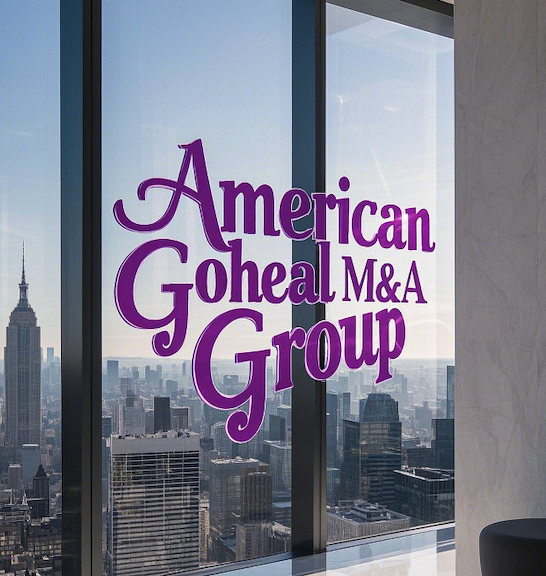"The essence of capital is the never-satisfied desire. Whoever can master this desire can dominate the future." - This sentence comes from Carl Icahn, a famous American investor. In the capital market, the flow and operation of capital are like the ever-changing wind and clouds. In this game of capital, private capital is quietly reshaping the pattern of listed companies' controlling rights through leveraged buyouts of industrial funds. It is not only a game of funds, but also a duel of wisdom and strategy.
So, how to achieve the acquisition of the controlling rights of listed companies through a complex closed-loop design of funds? What risks and opportunities are intertwined in this? As a professional M&A service provider, Goheal has been committed to providing investors and entrepreneurs with in-depth capital operation analysis, revealing the logic of capital flow behind leveraged buyouts, and helping companies gain a place in the complex capital market.
The art of closed-loop design of funds: layered structure, interlocking
When private capital conducts leveraged buyouts, the first thing it has to face is a design problem of "closed-loop funds". This is not just a simple gathering and flow of funds, but also how to achieve efficient allocation of funds and minimize risks through precise structural design in the game of interests. In this regard, Goheal deeply realized that innovative structural design is crucial to the success of leveraged buyouts.

American Goheal M&A Group
First, industrial funds lay the foundation for the fundraising of acquisition funds by adopting a two-tier structure of "GP (general partner) + LP (limited partner)". GP usually obtains management rights with 1%-5% of the funds, while LP provides more than 95% of priority funds. This structure can not only solve most of the funding needs through external fundraising, but also ensure that the management team has sufficient control over the acquisition project. Taking the cross-border acquisition of Ziguang Guowei as an example, a leveraged buyout of 2.3 billion euros was successfully implemented through multi-layer SPV nesting.
But the structuring of funds is not the only key to the success of leveraged buyouts. The innovation of mezzanine financing tools, especially the use of convertible bonds, income rights certificates and other tools to fill the gap between equity and debt funds, has greatly improved the flexibility of acquisition projects. These mezzanine funds usually account for 20%-30%, and the annualized return is set between 12%-15%, which has a high rate of return. By setting the conversion terms, when the net profit of the target company increases by more than 30%, the mezzanine funds can be automatically converted into equity, which provides the acquirer with considerable long-term return potential.
Fund raising and exit path: dual-track parallel, in-depth operation
When private capital acquires listed companies, fund raising and exit path design are equally important. The fund raising path is usually a combination of priority funds (such as bank merger and acquisition loans), intermediate funds (such as insurance asset management), and subordinated funds (such as actual controllers) to form a leverage multiple of 3-5 times. Typical tools include structured asset management plans and income swap agreements. Such a funding structure not only provides sufficient financial support for acquisitions, but also can be flexibly adjusted according to different stages of the acquisition progress.
After holding the target company through industrial funds, the acquirer can inject the target company's high-quality assets into the listed company through asset injection, private placement, etc., and further enhance its control. In this process, tools such as equity pledge financing and bridge loans are widely used to ensure that the capital chain of the acquisition is not interrupted.
When the funds are invested, how to exit becomes another key consideration. The common exit paths are that the listed company acquires the equity held by the fund in cash, or exits at a premium through spin-off listing. At this time, the leverage ratio is usually controlled between 1.5-2 times, and through the gambling agreement or equity repurchase clause, the acquirer can effectively guarantee its return at the time of exit.
Risk control: prepare for a rainy day and prevent trouble before it happens
However, capital operation is always accompanied by risks, especially the risks brought by leveraged acquisitions are more complicated. How to control risks in a complex capital chain and leverage structure has become a difficult problem that the acquirer must solve. Goheal believes that the core of risk control lies in the dual protection of the gambling agreement and the capital flow monitoring system.
First, in the design of the gambling agreement, indicators such as net profit growth rate and asset securitization rate are usually set as agreements between shareholders. If the standards are not met, cash compensation or share repurchase of the original shareholders will be triggered. This mechanism can not only prevent the major shareholders from arbitrarily withdrawing when the target company is not doing well, but also provide certain protection for investors. For example, in a new energy merger and acquisition case, a clause was set up that "the target company's cumulative net profit for three years is not less than 1.5 billion yuan". If the requirement is not met, the difference will be compensated by the original shareholders at 1.5 times the cash.
Secondly, the establishment of a cash flow monitoring system should not be ignored. By establishing a full-cycle cash flow control model of "raising-investing-exiting", the acquirer can grasp the cash flow in real time, reserve 10%-15% of the funds for replenishment and interest payment, and ensure the stability of the capital chain. At the same time, by setting a stock price warning line (such as the ratio of pledged market value to loan principal is not less than 150%), the acquirer can promptly discover potential risks in the flow of funds.
Compliance boundary: regulatory red line, risk control
In the process of leveraged acquisition, the control of compliance boundaries is particularly important. With the continuous improvement of regulatory policies, especially the grading requirements of structured products in the "New Asset Management Regulations", the acquirer needs to ensure the compliance of its capital structure. Specifically, the grading ratio of equity products shall not exceed 1:1, and investments in equity-like debts need to be included in the on-balance sheet liabilities.
In addition, when listed companies acquire fund assets, they must avoid the suspicion of interest transfer. For example, the transaction price must not be lower than 90% of the appraisal price, and the independent directors must express clear opinions on the fairness of the transaction. These compliance requirements ensure the fairness of the market and enable leveraged buyout operations to be carried out within a transparent and standardized framework.
Benchmark Cases: Lessons from Success
The "patient capital" model of Anhui Province and the acquisition of Ziguang Guowei have provided us with valuable experience of success and failure respectively. Through the "loan-investment batch linkage" mechanism, Patient Capital uses M&A loans to match industrial funds, achieving seamless connection between leveraged funds and industrial resources, and improving capital turnover efficiency by 40%. This model proves that the close combination of industrial capital and financial capital can bring higher capital operation efficiency to the acquirer.
However, the acquisition of Ziguang Guowei was rejected by the regulator because it failed to effectively penetrate the closed loop of 2.3 billion euros of cross-border funds. This case tells us that cross-border leveraged buyouts need to pay special attention to the compliance of foreign exchange paths, especially when involving large amounts of capital flows, and relevant procedures must be reported in advance to avoid compliance issues affecting the smooth progress of transactions.
Conclusion: Facing the capital challenges of the future
The closed-loop design of private capital through industrial fund leveraged acquisition of listed companies has entered a more sophisticated and complex era. In this process, the innovation of capital structure, the establishment of risk control mechanism and the control of compliance boundaries have become the watershed between the success and failure of acquisition.
However, with the increasingly stringent regulatory policies and the gradual maturity of the capital market, whether private capital can continue to gain a foothold in the market through this leveraged method is still a question worth pondering. How will capital operations develop in the future? How should enterprises and investors grasp these changes and find the most appropriate capital structure and operation mode?
For this question, please discuss with us in the comment area. Goheal will also continue to pay attention to the latest developments in the M&A market and provide investors and entrepreneurs with more in-depth analysis and suggestions.

Goheal Group
[About Goheal] Goheal is a leading investment holding company focusing on global M&A holdings. It has been deeply involved in the three core business areas of acquisition of listed company control, M&A and reorganization of listed companies and capital operation of listed companies. With its deep professional strength and rich experience, it provides enterprises with full life cycle services from M&A to reorganization to capital operation, aiming to maximize corporate value and achieve long-term benefit growth.